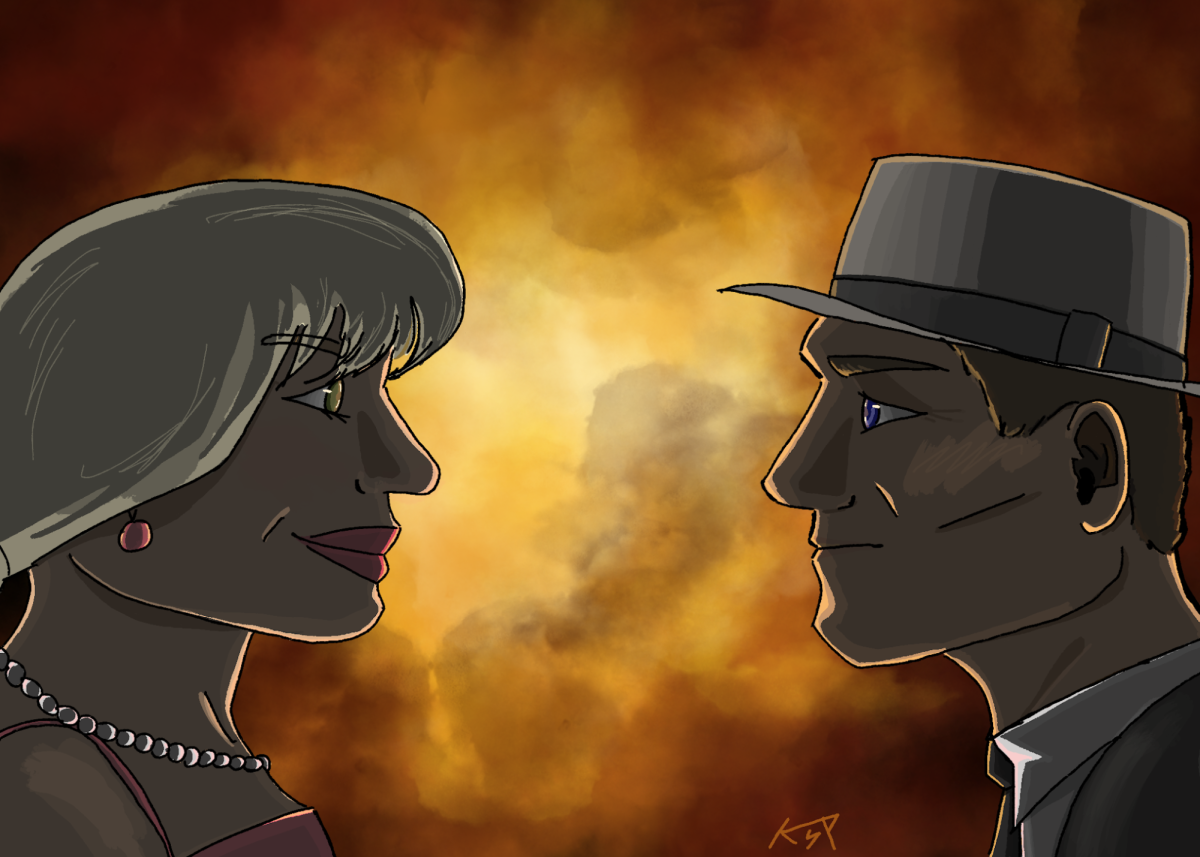In the midst of the scorching July heat, I ventured to a local coffee shop. Two distinct tip jars at the checkout counter captured my attention: one labeled “Barbie,” and the other dubbed “Oppenheimer.” Weird, I thought.
Then, as I entered my car, I switched on the radio and was immediately greeted by beats of Dua Lipa’s “Dance The Night,” featured in the “Barbie” movie trailer. That must be a coincidence.
Moments later, upon arriving at my intended destination, I opened TikTok, where I was flooded with the latest wave of “Barbenheimer” memes.
In that moment, one thing became clear: “Barbenheimer” is inescapable and may be one of the most genius pop culture phenomena to ever occur.
Both movies were released July 21, yet each of them possessed entirely different tones and messages.
“Barbie,” written and directed by Greta Gerwig, showcases a fusion of two separate worlds: Barbie Land and the real world. With Margot Robbie portraying Barbie and Ryan Gosling as Ken, the film highlights the coexistence of both worlds.
In the past, Barbie dolls have stereotypically been viewed as incapable of doing anything aside from leisurely activities, dressing to impress, and gathering with friends.
I really enjoyed how Gerwig refuted these stereotypes in the film by portraying Barbie Land as a place full of unlimited opportunities for women. They can embrace their true selves while occupying any job: lawyers, diplomats, mermaids, and even doctors.
This power dynamic changes when Barbie and Ken venture into the real world, uncovering the harsh realities of misogyny and toxic masculinity. Barbie was first objectified and catcalled, an unfortunate reality for a lot of women, while struggling to fit in. Ken, on the other hand, learned about the patriarchy and decided to bring those ideas back to Barbie Land to create Ken-dom.
Small moments like these in the film allow us all to acknowledge the challenges and societal pressures that women face regarding their appearance and the expectation to live up to a certain standard.
In the film, Mattel, the toy company that created Barbie, tries to send her back to Barbie Land by trying to physically place her in a plastic box. I liked how Gerwig tried to replicate the intentions of Mattel as they do everything they can to confine Barbie’s adventure for self-exploration.
Despite its powerful messages, I thought that Gerwig strived for more than she could handle at certain times. It felt like the movie spiraled into more serious messages about womanhood and then poorly transitioned into humorous dance numbers like the Kens battling each other at the beach or Ryan Gosling’s “I’m Just Ken” solo.
Near the end of the film, actress America Ferrera’s speech resonated, addressing societal pressures on women. To conclude her speech, she states, “I’m just so tired of watching myself and every single other woman tie herself into knots so that people will like us. And if all of that is also true for a doll just representing women, then I don’t even know.” This really summed up the movie’s main theme: women often sacrifice individuality to conform to societal norms.
Contrasting this feminist tone, “Oppenheimer,” directed and written by Christopher Nolan, revolves around the historical and scientific context of the creation of the atomic bomb. J. Robert Oppenheimer is portrayed by Cillian Murphy, a physicist who oversaw the Manhattan project during World War II.
The film depicts his inner conflict over creating the bomb and the moral implications of dropping it. He is shown at the Cavendish Laboratory in Cambridge as a young student studying physics, before completing his Ph.D. and becoming a professor in the United States where he teaches about quantum physics and meets his future wife.
One of the most intriguing yet confusing decisions made by Nolan was the incorporation of two distinct timelines within the film, each coming from different perspectives.
The colored scenes came from Oppenheimer’s subjective perspective, while the black and white scenes depict the aftermath and repercussions of the atomic bomb from a more objective perspective.
I appreciate the stylistic choice of using these two perspectives to gradually reveal the impact that the decision to create the atomic bomb has on everyone’s lives.
The colored scenes, in particular, vividly capture Oppenheimer’s stress and mental instability stemming from the pressure of his country and community.
While the film did feel lengthy at times, the ending truly encapsulates the toll that the Manhattan project has taken on Oppenheimer.
The concluding scene mirrors the movie’s opening, where Oppenheimer engages in a conversation with Albert Einstein. Their dialogue is unrevealed until the final scene, where Oppenheimer explains his fears of the bomb starting a chain reaction and leading other countries to develop more nuclear weapons, ultimately destroying the world. Oppenheimer responds, “I believe we did,” illustrating how his worst fears have become a reality, leaving him with a sense of regret about the potentially destructive consequences of his relentless pursuit to create this weapon.
This darker conclusion, centered around the self-destruction of humanity, stands in stark contrast to Barbie’s more optimistic and feminist ending.
Despite these differences in their thematic foundations, “Barbie” and “Oppenheimer” managed to join forces and create cinematic history. Forbes reported that their opening weekend was made the fourth biggest of all time.
Amidst a summer full of blockbuster releases, Barbenheimer served as a testament to the limitless creativity of the film industry.







































